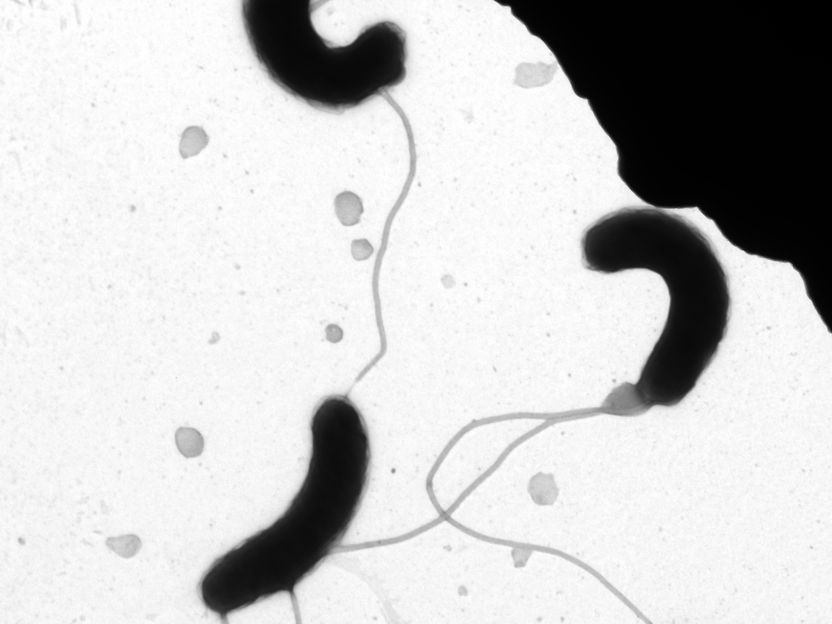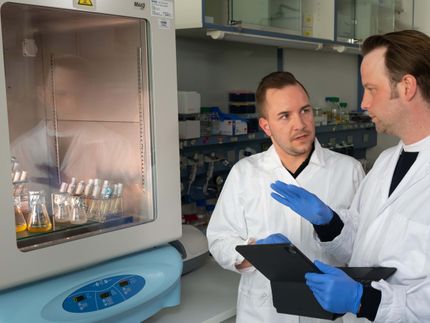Small molecules control bacterial resistance to antibiotics
antibiotics have revolutionized medicine by providing effective treatments for infectious diseases such as cholera. But the pathogens that cause disease are increasingly developing resistance to the antibiotics that are most commonly used. Scientists at the Friedrich Schiller University Jena, Germany have discovered a molecule that influences the antibiotic-resistance of cholera bacteria. They have published their results in the scientific journal “Nature Communications”.

Cholera bacteria under the microscope.
Kai Papenfort
Antibiotics work in different ways. Some, including penicillin, attack the cell wall of the bacteria by inhibiting their synthesis. But the bacteria are not helpless against this attack. "We have been able to identify a small ribonucleic acid that has a decisive influence on the antibiotic-resistance of the cholera-triggering bacterium Vibrio cholerae," says Kai Papenfort, Professor of General Microbiology at the University of Jena, Germany.
The protein CrvA is found in the periplasmic space of the bacterium. This lies between the outer cell wall and the basic substance of the cell, the cytoplasm, which is also surrounded by a membrane. There CrvA determines the curvature of the rod-shaped bacterium V. cholerae. "Until now, however, it was not known what controls the activity of this protein. With the small ribonucleic acid VadR we were able to identify a post-transcriptional inhibitor of the synthesis of this protein," says Prof. Papenfort. In contrast to messenger RNA, small ribonucleic acids do not contain any genetic information, but do influence its expression – usually after the DNA has been transcribed into messenger RNA.
Maintenance of the cell form is crucial for antibiotic resistance
"Cholera bacteria in which the protein CrvA is not suppressed by VadR show a reduced survival rate on contact with penicillin," says Papenfort. This indicates that the maintenance of the cell form by the small RNA is crucial for antibiotic resistance, the microbiologist adds. The researchers revealed other functions of the small RNA VadR, including the formation of biofilms, which play an important role in the pathogenicity of V. cholerae.
"VadR is one of many molecules that can intervene in gene expression in V. cholerae. If we understand all these molecules, their functions and their interaction, we can derive new therapeutic approaches. The increasing resistance to antibiotics makes this urgently necessary", says Papenfort, whose research contributes to the Cluster of Excellence „Balance of the Microverse“ at the University of Jena.
Original publication
Other news from the department science

Get the life science industry in your inbox
By submitting this form you agree that LUMITOS AG will send you the newsletter(s) selected above by email. Your data will not be passed on to third parties. Your data will be stored and processed in accordance with our data protection regulations. LUMITOS may contact you by email for the purpose of advertising or market and opinion surveys. You can revoke your consent at any time without giving reasons to LUMITOS AG, Ernst-Augustin-Str. 2, 12489 Berlin, Germany or by e-mail at revoke@lumitos.com with effect for the future. In addition, each email contains a link to unsubscribe from the corresponding newsletter.

















































